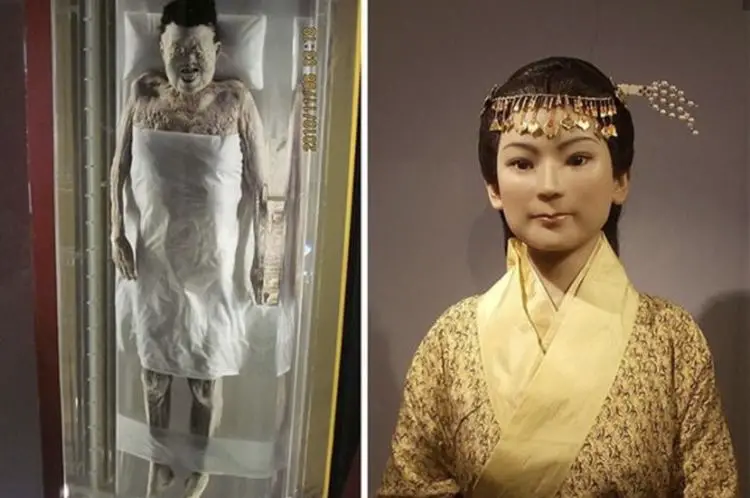The Astonishing Preservation of Lady Dai: China’s Western Han Dynasty
Lady Dai, also known as Xin Zhui, was the Marquise of Dai during the Western Han dynasty in ancient China. Her tomb, located in Mawangdui, was discovered over 2,000 years after her death, and her well-preserved body stunned archaeologists and experts alike. In this article, we will delve into the mysterious preservation of Lady Dai and explore the cultural and scientific significance of this unique discovery.

The Discovery of Lady Dai’s Tomb
Lady Dai’s tomb was discovered in the 1970s in Mawangdui, China. Archaeologists were surprised to find her body in such excellent condition, despite being over 2,000 years old. The tomb contained hundreds of valuable artifacts, including lacquered wooden coffins, silk clothing, and texts, offering a rich insight into the life and customs of the Western Han dynasty.
The Preservation of Lady Dai’s Body
Lady Dai’s well-preserved body is considered one of the most significant discoveries in the field of archaeology. Her skin and organs were all intact, and she still had hair and eyelashes. Scientists even found seeds of melon in her stomach, leading them to believe she died during the melon season in the summer and within a few hours of eating the fruit.
The most fascinating aspect of Lady Dai’s preservation was the mysterious liquid that her body was soaked. The liquid was mildly acidic and contained magnesium, which is believed to have played a key role in preserving her body. To this day, scientists are still trying to determine the exact composition of the liquid, and it remains one of the most intriguing mysteries in archaeology.
The Cultural and Scientific Significance of Lady Dai’s Discovery
Lady Dai’s well-preserved body and the artifacts found in her tomb offer a unique window into the life and culture of ancient China. The luxurious items found in her tomb, such as the silk clothing and lacquered wooden coffins, provide evidence of her wealth and status in society. The texts and documents found in the tomb offer insights into the beliefs and customs of the Western Han dynasty.
Furthermore, Lady Dai’s preservation is of great scientific significance. The discovery of her well-preserved body has opened up new avenues for research and has contributed to the development of techniques for preserving bodies for future generations. The discovery has also sparked interest in the study of ancient Chinese medicine and the use of herbal remedies for preservation purposes.
Lastly in conclusion,
Lady Dai’s well-preserved body and tomb are considered one of the most fascinating and unique discoveries in the field of archaeology. The preservation of her body and the cultural and scientific significance of the discovery offer a glimpse into the rich history and culture of ancient China. The mysterious liquid that helped preserve her for over 2,000 years remains one of the most intriguing mysteries in the field, and researchers continue to study and uncover the secrets of her preservation.
Lady Dai’s legacy continues to live on, and her discovery provides us with a valuable opportunity to learn from our past and appreciate the rich cultural heritage of ancient civilizations
